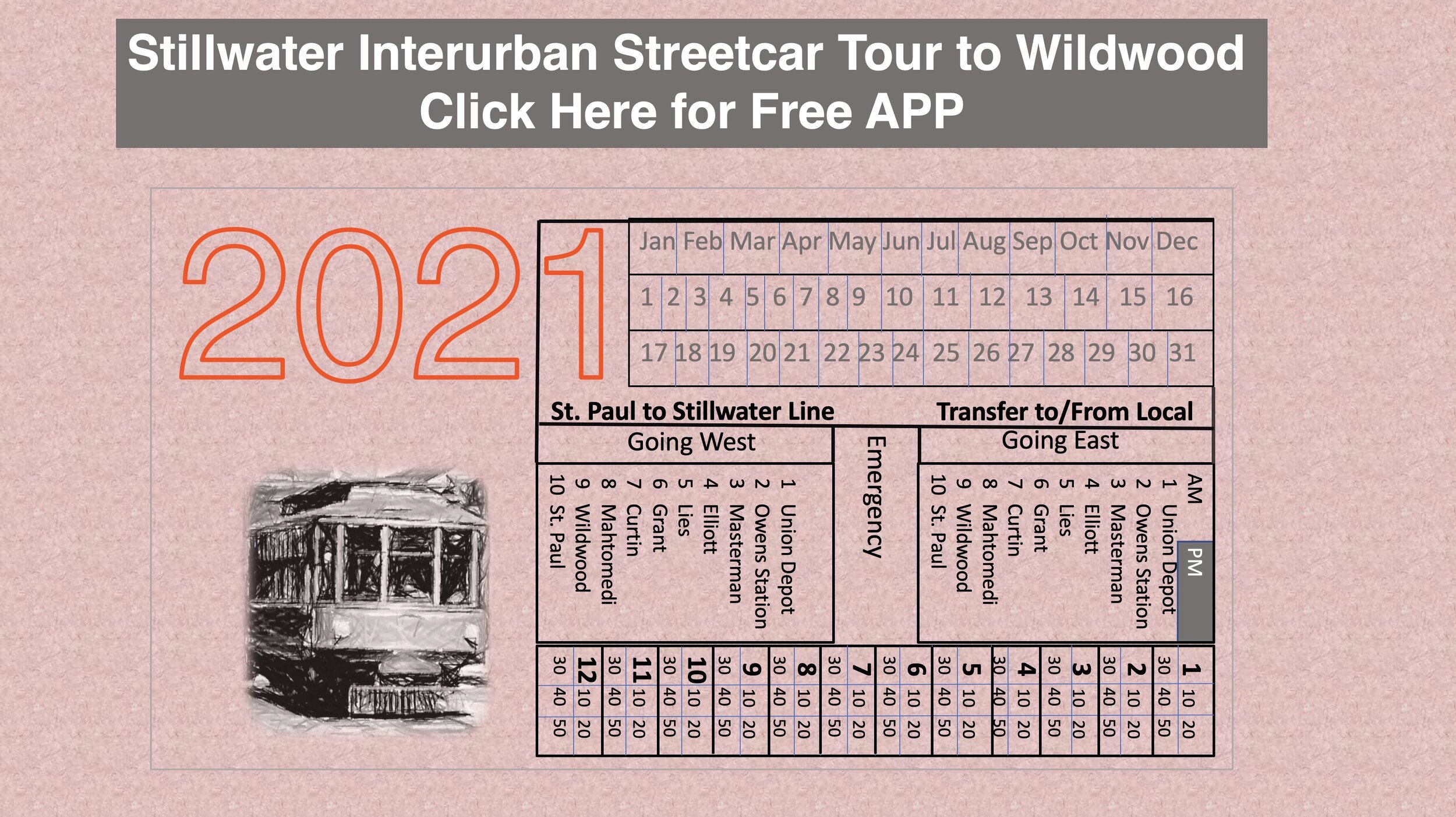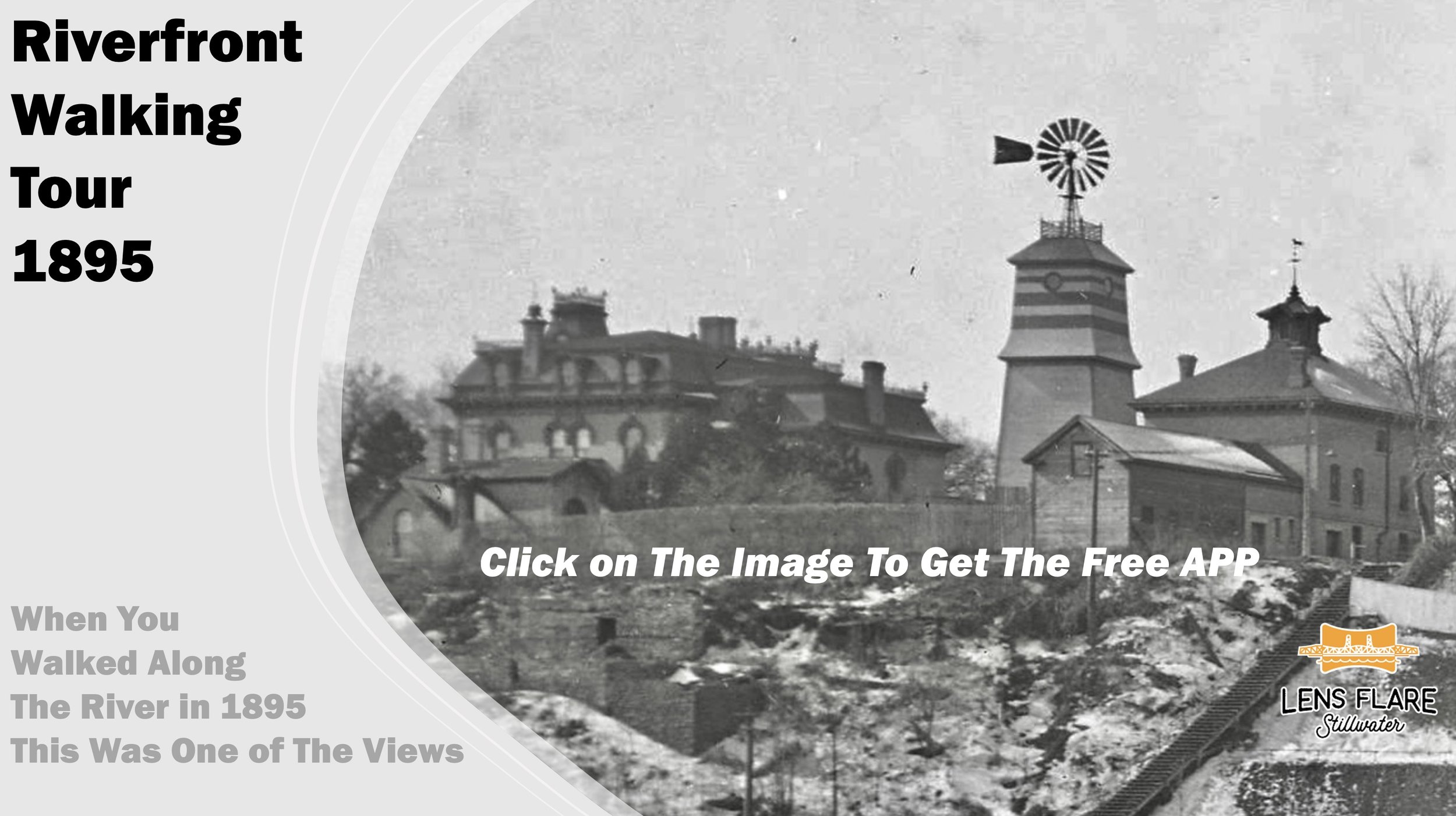Slab Alley of Stillwater
Written by Bill Fredell
Slab Alley is named after large slabs of lumber that were trimmed from the outside diameter of the trees. These pieces were used in the construction of the homes in the photos. These structures on Slab Alley were the homes of mostly employees of the lumber factories in Stillwater.
Slab alley was a small part of what is now south Main Street. Slab alley was actually only two blocks long. In this story, more territory along south Main Street will be included beyond slab alley. It extends from Curtis Caves, south to The Oasis Café.
The first photo viewpoint is looking north. There is a freight train visible as well as, several houses. If you look carefully, you will see a rectangular white sign. In the next photo, you see a much closer view of the sign that marks the gasoline station, which was called Keynoil. Further north, there are a few more houses, and also a grain elevator. The grain elevator is known today as The Tin Bins Café on the building’s lower level. There is an apartment on the upper floors. By the way, it has been stated that the building has been moved to its present location. The construction of mid-western grain elevators is unique, where lumber was arranged with the boards flat, to form heavy support walls.
Other buildings along the street in the southerly direction include the J.E. Baudet Monument Works. Also, there is the Aiple Northwestern Brewery and Malt House, established in 1852. The original brewery was destroyed by fire and this new plant was completed in 1890. Alongside the brewery was the home built by Mr. Frank Xavier Aiple in 1868. Just before completion of the house, Mr. Aiple was seriously injured in a fall while directing some construction work at the brewery. Mr. Aiple died, and he was never able to occupy the residence.
Photos show the brewery, the house and other buildings that make up the Aiple property.
The Hersey Bean Sawmill was located between the river and the south Stillwater road and slab alley. The sawmill and all the adjoining buildings were built on the river’s edge, while the houses were on the bluff side of south Main Street. There also were railroad tracks and sidings located along the east side of south Main Street.
Some people other than local employees lived in the slab alley homes. One such person was the mother of Bing Crosby, Kate Harrigan who grew up in in this humble part of Stillwater.
Slab alley disappeared in 1935, when the highway department determined that south Main Street was an important part of the roadways, and needed to be widened. All the buildings on slab alley were destroyed as well as much of what has been described in this story. If you investigate closely, you can still see the shadows of foundations of some of these structures. It should make you wonder what life was like working and living in this busy part of early Stillwater.
The Oasis Café was built later, in 1957 and is now the only building along south Main Street. The site of the Oasis Café is the same location as the Aiple Brewery and Home. The City of Stillwater has acquired property along the riverfront below the Oasis Café. Slab alley and the many lumber mills along south Stillwater are part of our past.. There are ruins of the Hersey Bean Lumber mill along the bicycle trail that are part of this new recreational park and story.
References:
http://www.twincities.com/2014/03/29/stillwater-sawmill-fertilizer-plant-barge-facility-and-park/
Mary Divine; Pioneer Press; March 29, 2014
Article on Slab Alley and Hersey Bean photo
Article on Slab Alley by Brent Peterson
October 7, 2016
http://stillwatergazette.com/2016/10/07/stillwaters-slab-alley/









